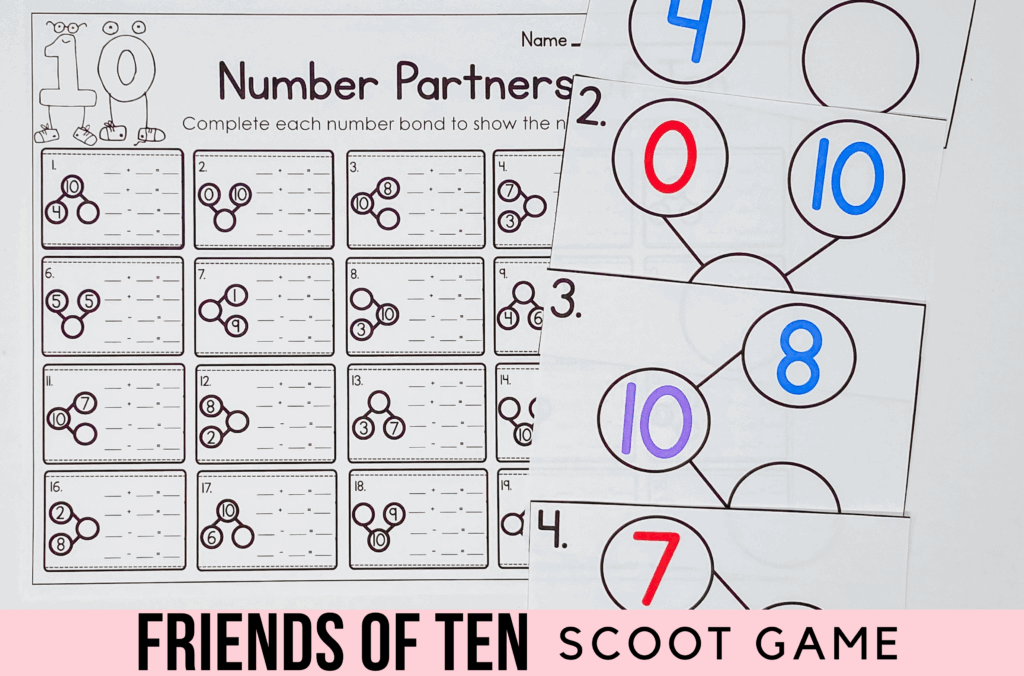How I Teach Friends of 10 Without Losing My Sanity (Or My Voice) – Friends of 10 Scoot Game
You know how every year, no matter how many number talks we do or how many tens frames we use, there’s always a handful of kids who just can’t quite get the friends of 10?
Same.
So a few years ago, after yet another failed attempt to make a worksheet exciting, I tried turning our review into a Friends of 10 Scoot Game, and let me just tell you: it was an instant win. My kids were engaged, they were moving, and they were finally starting to own those number partners of 10 without me having to repeat “6 and what makes 10?” 600 times a day.
Let me tell you exactly what worked.
Why I Swear By Scoot Games for Number Fluency
I’m going to be real here: I used to think Scoot Games sounded like chaos waiting to happen. Kids hopping from desk to desk? Nope.
But when you lay down the expectations and let them practice first, it’s not chaos. It’s magic! The energy in the room goes way up (in a good way), and suddenly, addition and subtraction practice feels like a game instead of a chore.
The Friends of 10 Scoot Game is one of my absolute favorites because it helps them visualize and internalize those pairs that make ten: 0+10, 1+9, 2+8, and so on—all while moving, laughing (silently… mostly), and thinking.
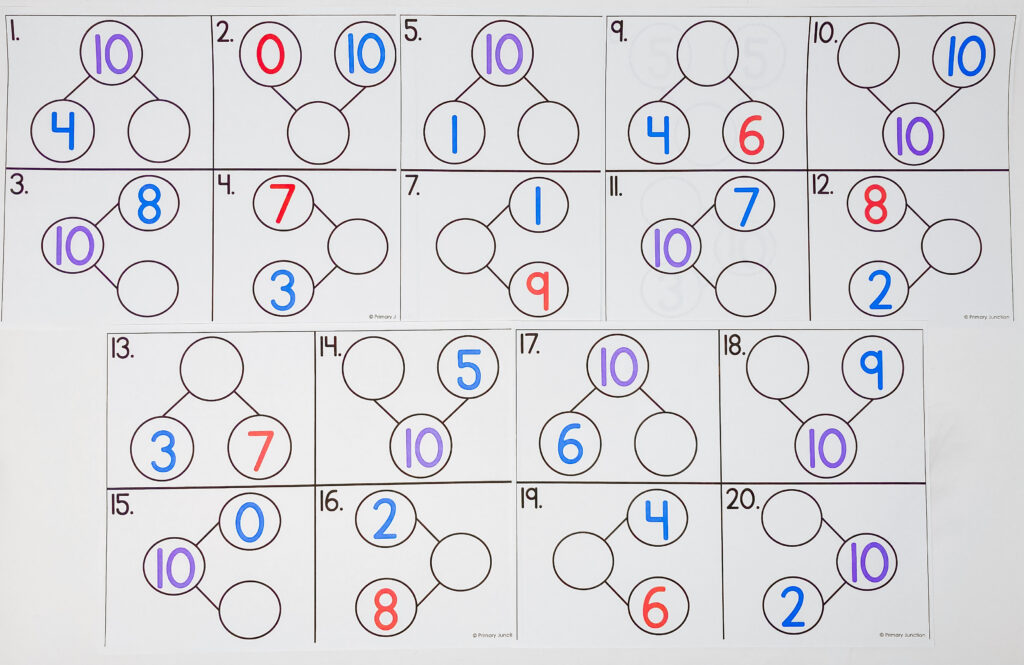
How I Use the Friends of 10 Scoot Game
There are a few different ways I like to use this, depending on the group and the time of year:
1. Whole Class Scoot
I place the cards around the room or on desks in number order. Each student has a recording sheet and a pencil. I use a timer and call out “SCOOT!” when I’m ready for students to move to the next card.
Some of my kids will literally cheer when I tell them it’s Scoot day. They love the routine, and it makes for the perfect Friday math review when the wiggles are strong.
2. Write the Room
If I’ve got a smaller group or we’re rotating through stations, I tape the task cards around the room and give the kids clipboards. They walk around and work at their own pace, filling out their sheets.
This is especially helpful when you want to slow the pace and really see what each student understands.
3. Small Group or Intervention
If I’ve got a few students still struggling with the concept, I pull out the black-and-white cards and go through them together with manipulatives or number bonds. It’s a great way to keep things visual and hands-on without overwhelming them.
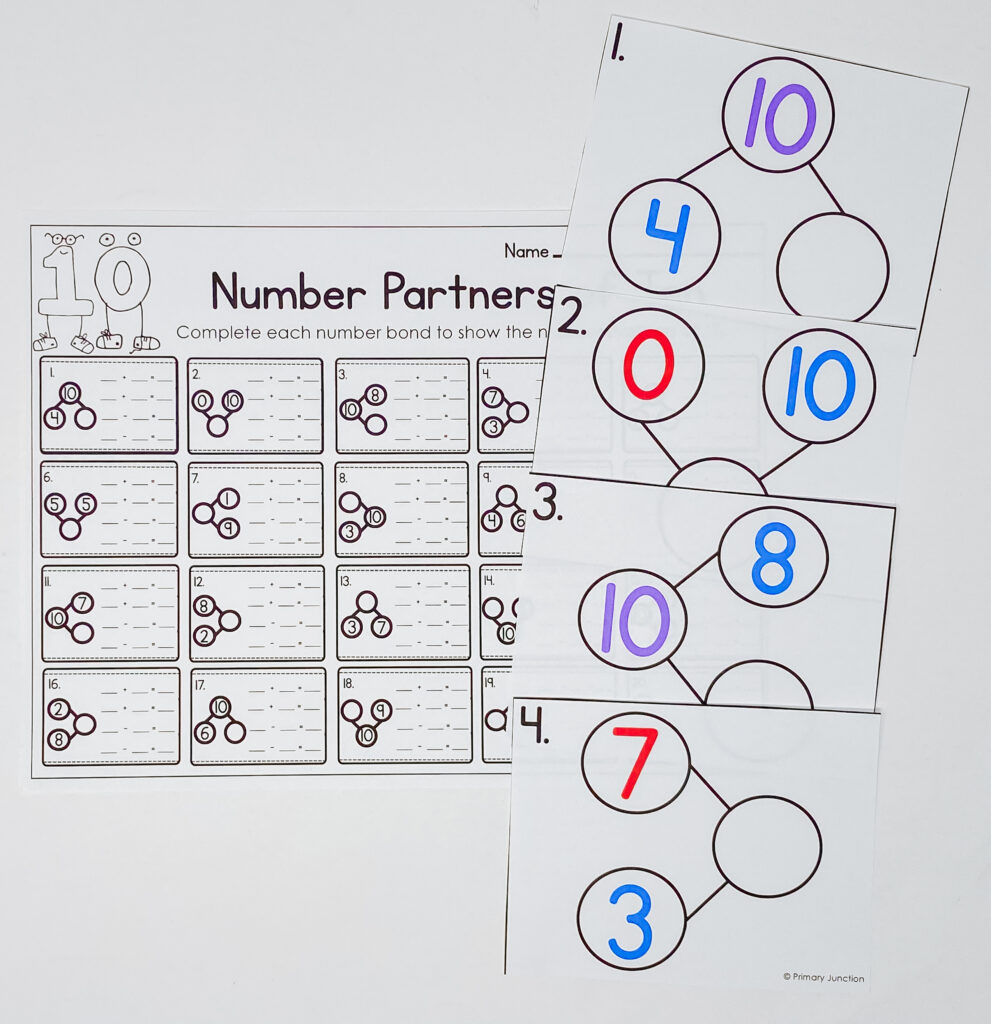
Built-In Differentiation (Because We Need It!)
One thing I love about this Friends of 10 Scoot Game is that it comes with two different recording sheets:
- One is just number bonds, which is perfect for early finishers or students still working on understanding the concept.
- The other includes space for writing out the full fact family: two addition and two subtraction facts, which is a great extension for kids ready for more of a challenge.
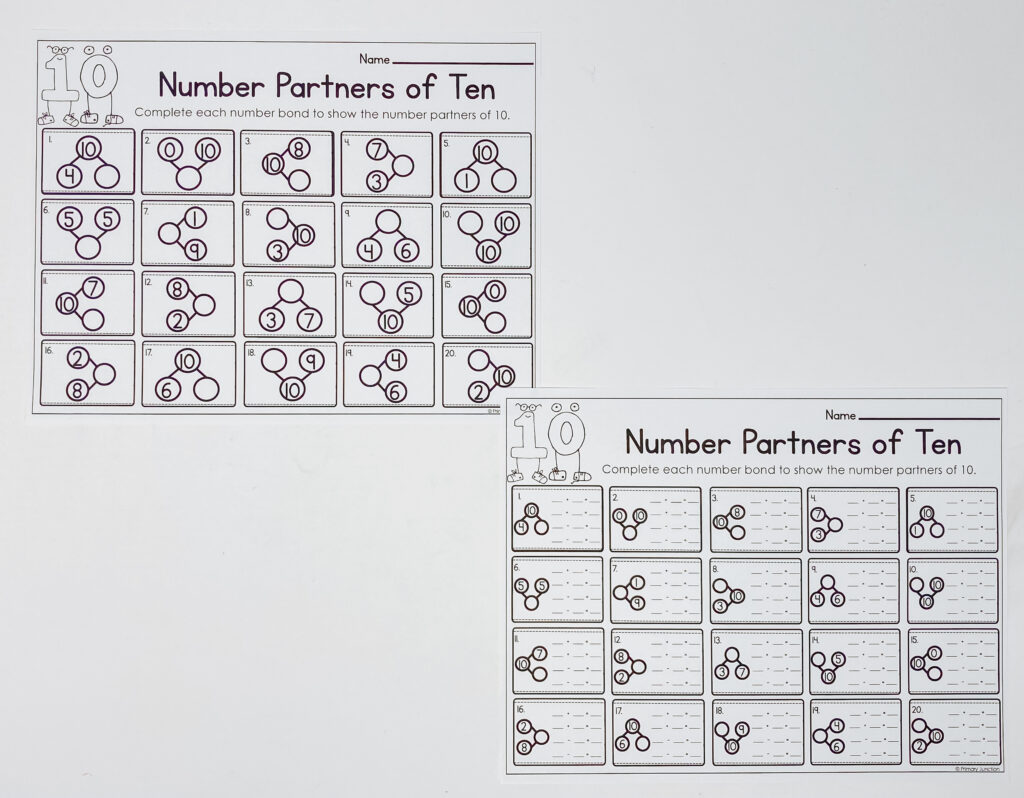
And let me just say… having both color and black-and-white versions of the task cards is a lifesaver when the copier is down or ink is low (because… of course it is).
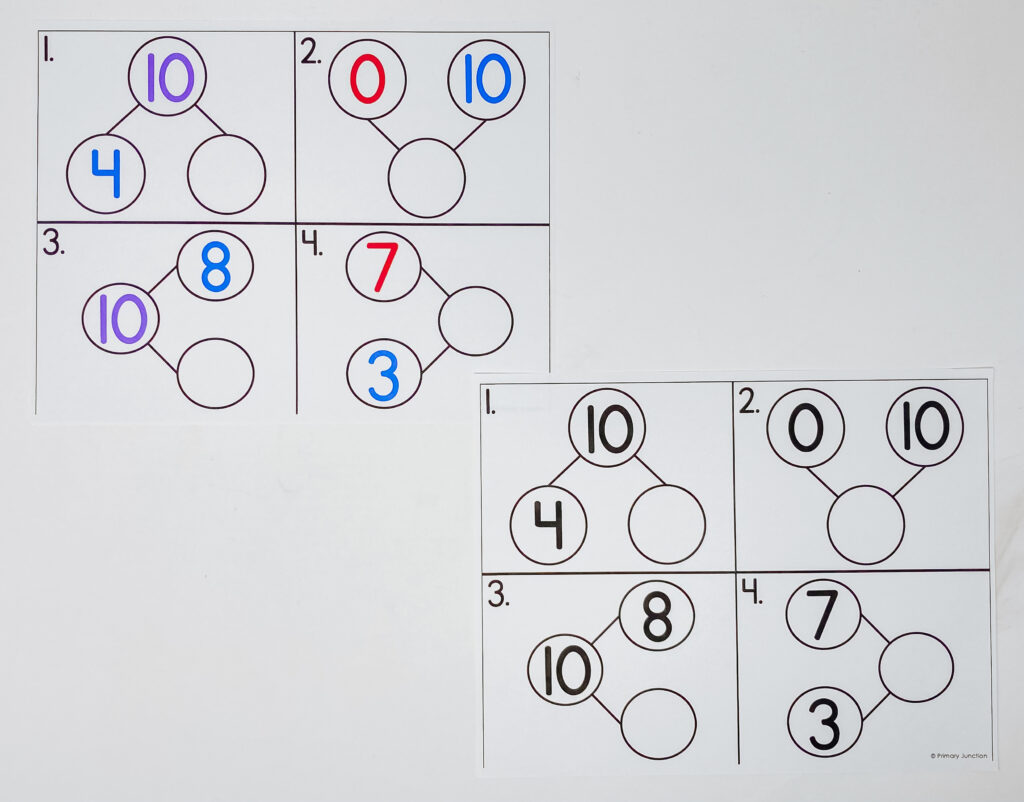
Why It Works (And Why I’ll Keep Using It)
There’s something about mixing movement with math that just makes everything stick better. When my students physically move through the room while working through those number partners of 10, it feels like the learning is deeper.
It’s not just about rote memorization; it’s about making connections. And with a concept like Friends of 10, that’s everything.
So if you’re feeling stuck or your students just need something new, give Scoot a try. You don’t have to change your whole math block—just try it once. I bet you’ll be surprised how smoothly it goes and how many of your kids finally click with those tricky combinations.
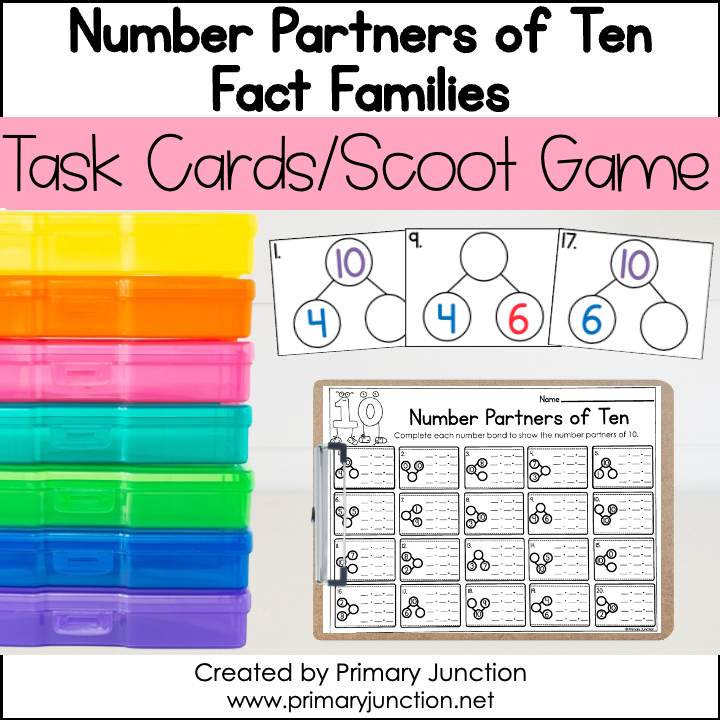
If you’d like to grab a copy for your class, you can get it here. Happy scooting, teacher friend! You’ve got this. 🧡

